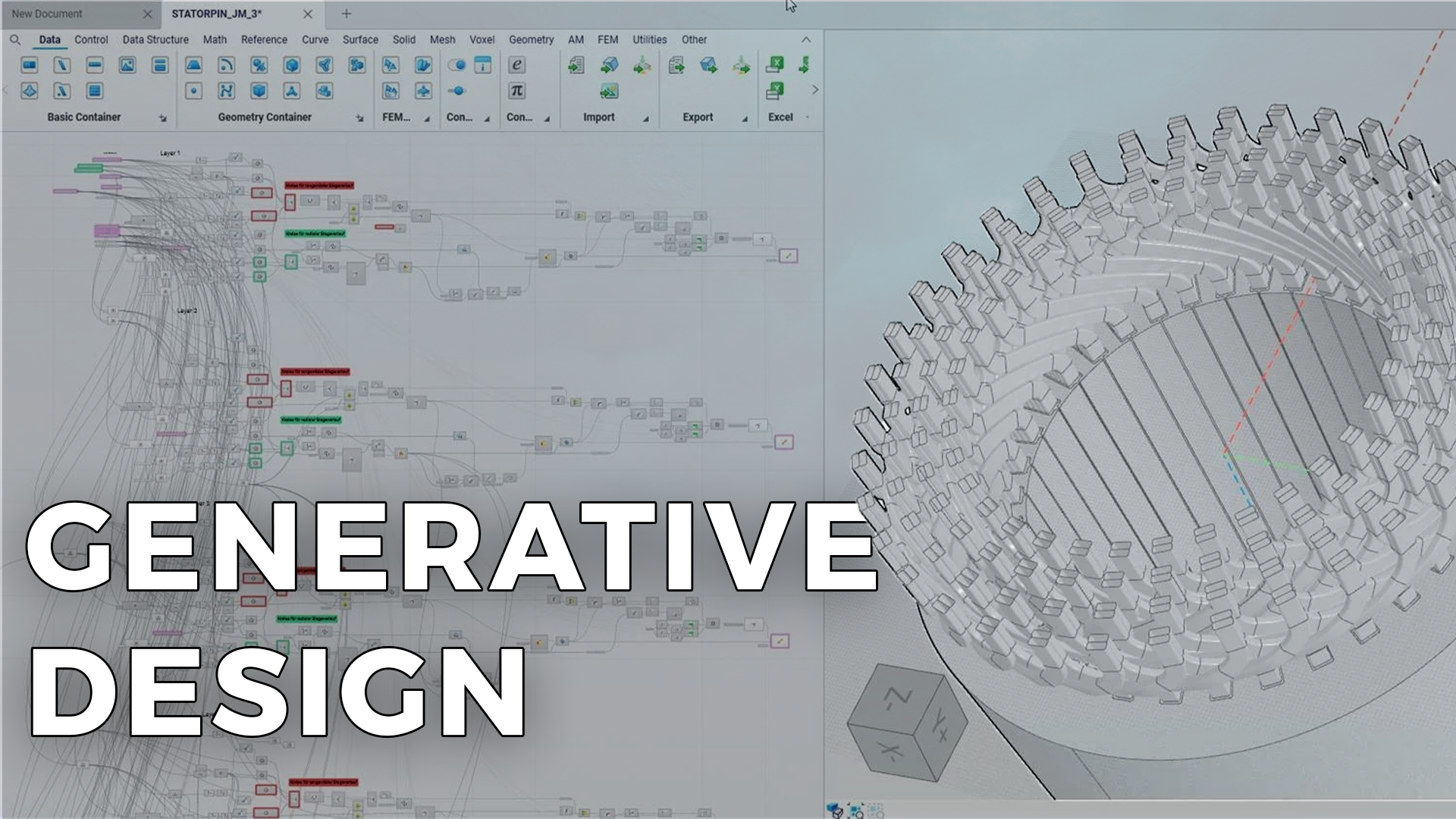Generative design rapidly transforms the engineering industry, setting new benchmarks for what is possible. As technologies advance, the definition and scope of design evolve, challenging traditional norms and introducing innovative methodologies. This shift fosters a new era of creativity and efficiency, enabling engineers to solve complex problems with unprecedented precision and speed.
The Emergence of Generative Design
Generative design leverages powerful algorithms to explore a vast array of design possibilities. This technology allows engineers to automate numerous process steps, freeing up time and enabling deeper solution space exploration. The focus has shifted towards programming skills, computer science, and engineering, with users developing algorithms to tackle problems. Sprecher 2 highlighted, "The focus on programming skills and computer science in engineering has risen." By embracing these skills, engineers can harness the full potential of generative design, creating previously unimaginable solutions.
The Technology Behind Generative Design
Generative design utilises algorithms that can create multiple designs, particularly in mechanical engineering. Techniques such as topology optimisation and advanced computational design are now integral parts of the process. In our podcast about Generative Design, Andrew Sartorelli mentioned..
"Generating multiple designs in the mechanical design space using topology optimisation algorithms and other computational techniques."
With the advent of large language models (LLMs) and advanced computational techniques, generative design is expanding its capabilities, offering unprecedented opportunities for innovation. This technology allows for the creation of designs that are optimised for various parameters, including weight, strength, and material usage.
Synera Generative Design
Automation and Efficiency
One of the significant advantages of generative design is its ability to automate repetitive tasks, enhancing efficiency and productivity. Engineers can now focus on solving unique and complex problems rather than repeatedly addressing the same issues. Daniel Löwen emphasised...
"You can take these process steps and automate them away, also it frees up a lot of your time."
This automation not only saves time but also improves the overall quality of the designs. For example, generative design can quickly generate multiple iterations of a product, allowing for rapid prototyping and testing.
Introduction to Generative Engineering with Synera
Combining Technologies for Superior Outcomes
Integrating various tools and technologies is crucial for maximising the benefits of generative design. For example, combining traditional CAD tools with simulation software and generative design techniques allows for a seamless workflow, leading to better outcomes. If you can combine all of these in an automated workflow, you can go further in exploring the solution space than before.
This integration helps in exploring the solution space more thoroughly and efficiently. Additionally, the use of cloud computing can significantly enhance the computational power available for generative design, enabling more complex simulations and optimisations.
Overcoming Misconceptions
There are misconceptions about generative design, particularly regarding its capabilities and limitations. While generative design can significantly enhance the design process, it is not a one-size-fits-all solution.
Generative design can be everything or nothing, depending on the context.
It requires a deep understanding of the specific engineering problems and the ability to implement the right algorithms and tools effectively. Additionally, generative design should be seen as a tool that augments human creativity, rather than replacing it. Engineers still need to provide the initial inputs and make critical decisions throughout the design process.
Real-World Applications and Case Studies
Generative design is already making a significant impact across various industries. For instance, in the automotive and aerospace sectors, generative design helps create components that meet stringent performance and manufacturing requirements. By automating complex design processes, engineers can focus on more innovative and value-added tasks.
The industry really started with Autodesk's Fusion generative design technology, setting the benchmark for what is possible.
A notable example is General Motors using generative design to create lightweight car parts, resulting in significant weight reduction and improved fuel efficiency.

The Future of Generative Design
As generative design technology continues to evolve, its potential applications will expand further. The integration of generative AI and advanced simulation tools will play a crucial role in this evolution.
We are just at the beginning of everything, and generative AI will push us further.
These advancements will enable engineers to tackle even more complex challenges, pushing the boundaries of what is possible. Future developments might include the use of generative design in biomedical engineering to create custom prosthetics and implants tailored to individual patients.

Embracing the Change
For engineers and organisations to fully benefit from generative design, there needs to be a willingness to adopt new tools and methodologies. This adoption requires understanding the value proposition of generative design and being open to exploring its capabilities.
The best time for engineers to pick up new tools is when they are bored with their current tasks.
Training and education will also play a vital role in this transition, ensuring that engineers are well-equipped to leverage these advanced technologies. Companies like Synera, Autodesk or Hexagon offer comprehensive training programs to help engineers get started with generative design.
Conclusion
Generative design is augmenting the engineering landscape by offering innovative solutions, enhancing efficiency, and enabling deeper exploration of the solution space. As technology advances, the potential of generative design will continue to grow, providing engineers with powerful tools to solve complex problems and drive innovation. By embracing these changes and integrating generative design into their workflows, engineers can unlock new possibilities and achieve unprecedented levels of creativity and efficiency.
By diving deeper into generative design and its applications, engineers can stay ahead of the curve and lead the way in the next era of design innovation.

